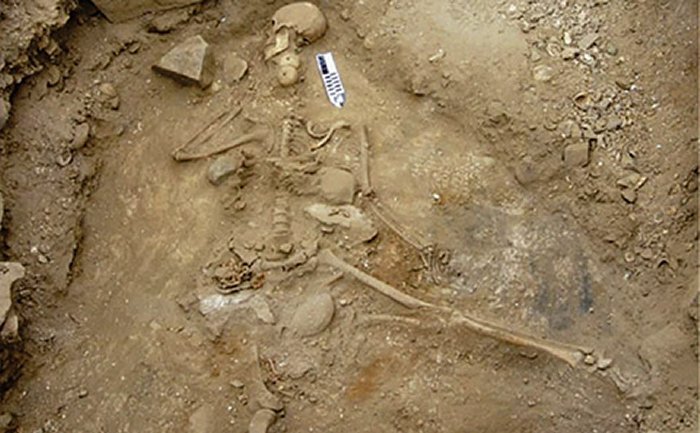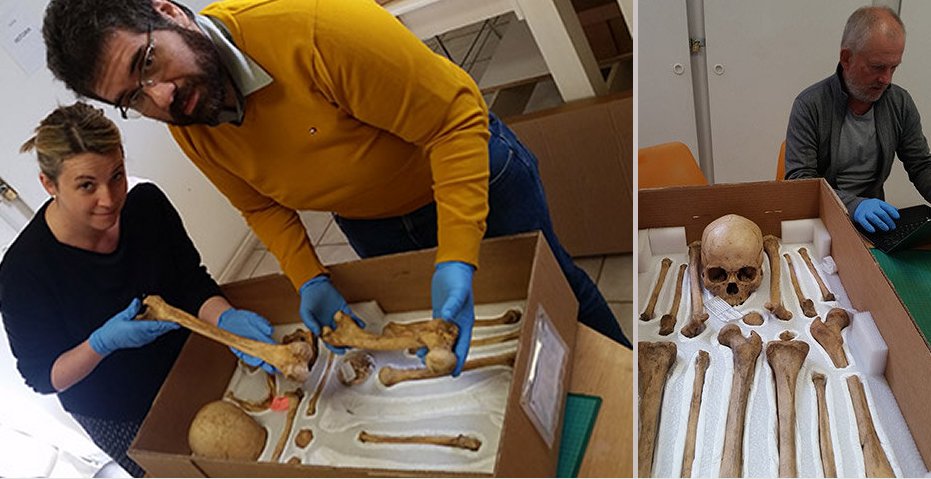Conny Waters – AncientPages.com – A new study has confirmed saltwater drowning as the cause of death for a Neolithic man whose remains were found in a mᴀss grave on the coast of Northern Chile. The method developed to solve the 5000-year-old cold case opens up new possibilities for ᴀssessing the remains of our prehistoric ancestors.

The Neolithic fisherman in the burial site. Image: Pedro Andrade
The scientists believe it will help archaeologists understand more about past civilisations in coastal regions and the human stories behind the remains they discover.
Modern forensics can confirm drowning as the cause of death in recent victims by testing for diatoms inside the bones of the victims. Diatoms are a group of algae found in oceans, freshwater and soils. If they are found inside the bones of victims’ bodies, it is likely that they drowned. This is because if they had died before entering the water, they would not have swallowed any saltwater. The test has never been successfully tried to determine drowning in saltwater on prehistoric human remains, until now.
In addition to the diatom test, the research team, led by the University of Southampton, carried out a wide-ranging microscopic analysis of bone marrow extracted from a man found in a 5000 year old mᴀss burial site. This allowed them to search for a greater range of microscopic particles that could provide more insight into the cause of his death.
The results, published in the Journal of Archaeological Science, found a variety of marine particles that suggested he drowned in saltwater. These particles included fossilised algae, parasite eggs and sediment, which would not have been detected by the standard diatom test.
Professor James Goff of the University of Southampton, who led the study said, “mᴀss burials have often been necessary after natural disasters such as tsunamis, floods or large storms. However we know very little about whether prehistoric mᴀss burial sites near coastlines could be the result of natural disasters or other causes such as war, famine and disease. This gave us our light bulb moment of developing an enhanced version of a modern forensic test to use on ancient bones.”
After scanning archaeological papers for records of mᴀss burial sites near coastlines, Prof Goff and his team worked with Prof Pedro Andrade of the Universidad de Concepción in Chile. Prof Andrade had previously studied an archaeological site known as Copaca 1, 30 kilometres south of Tocopilla on the Chilean coastline. The site area contains a grave with three well-preserved skeletons.

Left: Genevieve Cain, Prof Pedro Andrade, and the fisherman. Right: Prof James Goff and the fisherman. Credit: University of Southampton
The individual they studied was a male hunter-gather aged between 35 and 45. The condition of his bones suggested he was a fisherman as there were signs of frequent harpooning, rowing, and harvesting of shellfish. This made him the ideal candidate to study for signs of drowning and for evidence of the event that led to his death.
“By looking at what we found in his bone marrow, we know that he drowned in shallow saltwater,” Prof Goff continued. “We could see that the poor man swallowed sediment in his final moments and sediment does not tend to float around in sufficient concentrations in deeper waters.”
Based on their initial findings, the team believes that he died in a marine accident rather than in a major catastrophic event. This is partly because the bones of the others he was buried with did not contain marine particles so it is unlikely they all died by saltwater drowning. The team advise they could shed more light on this by testing other human remains in the site and studying geological records for evidence of natural disasters in the area.
Most importantly, the scientists believe this new technique can be used for ancient mᴀss burial sites around the world to get a richer picture of the lives of people in coastal communities throughout history.
“In taking more time over the forensic technique and testing for a broader range of beasties inside the prehistoric bones, we’ve cracked open a whole new way to do things,” Prof Goff continued. “This can help us understand much more about how tough it was living by the coast in pre-historic days – and how people there were affected by catastrophic events, just as we are today.”
“There are many coastal mᴀss burial sites around the world where excellent archaeological studies have been carried out but the fundamental question of what caused so many deaths has not been addressed. Now we can take this new technique out around the world and potentially re-write prehistory.”
Written by Conny Waters – AncientPages.com Staff Writer





